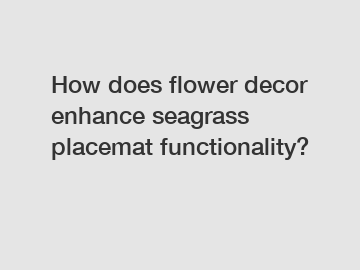Health Benefits of Using Enamel Cast Iron Cookware
Enamel cast iron cookware has gained immense popularity among home cooks and professional chefs alike, thanks to its superior heat retention, durability, and aesthetic appeal. However, a common question that arises is: Is enamel cast iron cookware safe for cooking? This article delves into the safety, benefits, and considerations when using enamel cast iron cookware, providing a comprehensive guide for informed cooking.

Enamel cast iron cookware consists of cast iron that is coated with a layer of enamel. This combination offers the best of both worlds: the heat retention and distribution properties of cast iron and the non-reactive, easy-to-clean surface of enamel. The enamel coating prevents the iron from rusting and eliminates the need for seasoning the cookware, making it a convenient option for many.
Safety Aspects of Enamel Cast Iron Cookware
Non-Reactivity with Food
One of the primary safety benefits of enamel cast iron cookware is its non-reactive surface. Unlike raw cast iron, which can react with acidic foods such as tomatoes or citrus, enamel-coated surfaces do not leach iron or any other substances into the food. This makes enamel cast iron cookware a safe choice for all types of cooking, including acidic dishes.
Absence of Harmful Chemicals
High-quality enamel cast iron cookware is free from harmful chemicals such as PFOA and PTFE, which are often found in non-stick coatings. The enamel glaze used in these products is typically made from natural materials, ensuring that no toxic substances are released during cooking. This makes enamel cast iron a healthier alternative to some other types of non-stick cookware.
Heat Resistance and Durability
Enamel cast iron cookware is renowned for its exceptional heat resistance. It can withstand high temperatures without degrading, making it suitable for various cooking methods, including stovetop, oven, and even broiling. The durability of the enamel coating also means that it will not chip or crack easily under normal use, providing a long-lasting cooking solution.
Health Benefits of Using Enamel Cast Iron Cookware
Enhanced Nutrient Retention
The excellent heat retention properties of enamel cast iron cookware ensure even cooking, which can help preserve the nutrients in your food. Slow and even heat distribution reduces the likelihood of burning or uneven cooking, thereby retaining more vitamins and minerals in your meals.
Reduction of Fat Usage
Due to the naturally non-stick surface of the enamel coating, less oil or fat is required for cooking. This can lead to healthier meals with lower fat content. Additionally, the ease of cleaning means that burnt residues are less likely to form, further promoting healthier cooking practices.
Considerations When Using Enamel Cast Iron Cookware
Proper Care and Maintenance
To ensure the longevity and safety of your enamel cast iron cookware, proper care and maintenance are essential. Avoid using metal utensils that can scratch the enamel surface. Instead, opt for wooden, silicone, or plastic utensils. Additionally, hand washing with mild detergent and a non-abrasive sponge is recommended to preserve the enamel coating.
Weight and Handling
Enamel cast iron cookware is significantly heavier than other types of cookware, which can be a consideration for some users. The weight contributes to its excellent heat retention, but it also means that extra care is needed when handling, especially when the cookware is hot.
Related links:What Makes a Great Clothes Hanger?
The advantage of vintage. - Spaces
Importance of retro in design - Visual Architects
Why Buying Vintage Clothes Is The New Luxury
Summary of the Occupational Safety and Health Act
What are TIPS for liver failure?
Transjugular Intrahepatic Portosystemic Shunt Complications
Thermal Shock Prevention
To prevent thermal shock and potential cracking of the enamel, it is important to avoid sudden temperature changes. For instance, do not place hot cookware directly into cold water. Allow it to cool gradually before cleaning.
Comparison with Other Cookware Types
Enamel Cast Iron vs. Non-Stick Cookware
While non-stick cookware is known for its convenience, it often contains chemicals such as PFOA and PTFE, which can degrade at high temperatures and release toxic fumes. In contrast, enamel cast iron cookware is free from these chemicals, making it a safer choice for high-temperature cooking.
Enamel Cast Iron vs. Stainless Steel
Stainless steel cookware is another popular option due to its durability and non-reactive surface. However, it does not offer the same heat retention and even cooking properties as enamel cast iron. Additionally, enamel cast iron's non-stick capabilities can make it easier to cook certain dishes without sticking, compared to stainless steel.
Enamel Cast Iron vs. Raw Cast Iron
Raw cast iron requires regular seasoning to maintain its non-stick surface and prevent rusting. While it is highly durable and provides excellent heat retention, the maintenance can be cumbersome for some users. Enamel cast iron eliminates the need for seasoning and is easier to clean, making it a more user-friendly option.
Top Tips for Using Enamel Cast Iron Cookware
Preheating the Cookware
For optimal cooking results, preheat your enamel cast iron cookware gradually. Start on low heat and then increase to the desired temperature. This helps to evenly distribute the heat and prevents food from sticking.
Using Appropriate Cooking Oils
Although enamel cast iron cookware requires less oil, it is still important to use oils with a high smoke point, such as canola or grapeseed oil, for high-temperature cooking. This prevents the oil from burning and maintains the integrity of the enamel surface.
Avoiding Metal Utensils
To protect the enamel coating, avoid using metal utensils. Instead, choose utensils made of wood, silicone, or plastic to prevent scratching the surface.
Cleaning and Storage
After cooking, allow the cookware to cool before washing. Use warm water, mild detergent, and a soft sponge to clean. Avoid using abrasive cleaners or scouring pads, which can damage the enamel. Dry the cookware thoroughly before storing it to prevent any residual moisture from affecting the enamel.
Conclusion
In conclusion, enamel cast iron cookware is a safe, durable, and versatile option for various cooking methods. Its non-reactive surface, absence of harmful chemicals, and excellent heat retention properties make it an ideal choice for both everyday cooking and gourmet dishes. Proper care and maintenance will ensure that your enamel cast iron cookware remains a reliable kitchen companion for years to come.
Related links:What is 100% polyester mesh?
Mesh Fabrics: Knitting and Finishing Nylon and Polyester ...
Nylon, Polyester Mesh
Neuroendocrine Tumor: Diagnosis, Symptoms, Treatment ...
Exploring the Distinction: 2 Stage vs. 3 Stage Standing Desks
What is the point of glass tips?
Shelf VS. Rack: What Is The Difference?
- Previous: How to Use a 30cm Preseasoned Cast Iron Grill Pan
- Next: None








